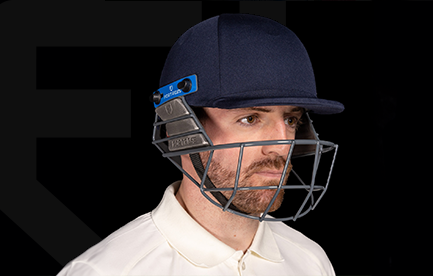

CRICKET BALL GUIDE
EVERYTHING YOU NEED TO KNOW ABOUT CRICKET BALLS
The game of cricket dates back to the mid-16th century and the first ever international matches were played in the second half of the 19th century.
From those first international matches to the modern day there has been plenty of change with cricket formats, bats, playing schedules and more, but the changes to cricket balls have surprisingly been fairly minimal.
In this guide we will look at the history of cricket balls, cover regulation cricket ball size/weights, examine the design and manufacturing process, and answer other frequently asked cricket ball questions.
Who invented the first cricket balls and what were they made from?
The first cricket balls are thought to have been made in the mid 18th Century in Kent, England by the Duke family. The business was established in 1760, and in 1775 the family obtained the Royal Patent for their cricket balls from King George IV. 5 years later in 1780 they manufactured the first-ever six seam ball. To this day Dukes Cricket Balls are still used in all Test Matches played in the UK and the West Indies.
Early cricket balls were made from a cork centre, with layers of twine wrapped around it, whilst the exterior was made of leather.
What is a cricket ball made of?
Cricket balls have evolved somewhat since the early years of cricket, with the sport expanding across the globe and diversifying into several different codes. A modern“first-class” regulation cricket ball is made from a cork core which is bound in several layers of nylon or wool. An additional layer of wood is often fitted around the cork core. The core and wood layer of the ball is then placed inside a leather exterior, which has a raised seam of six rows of stitching. The cricket ball seam is made of string or nylon.
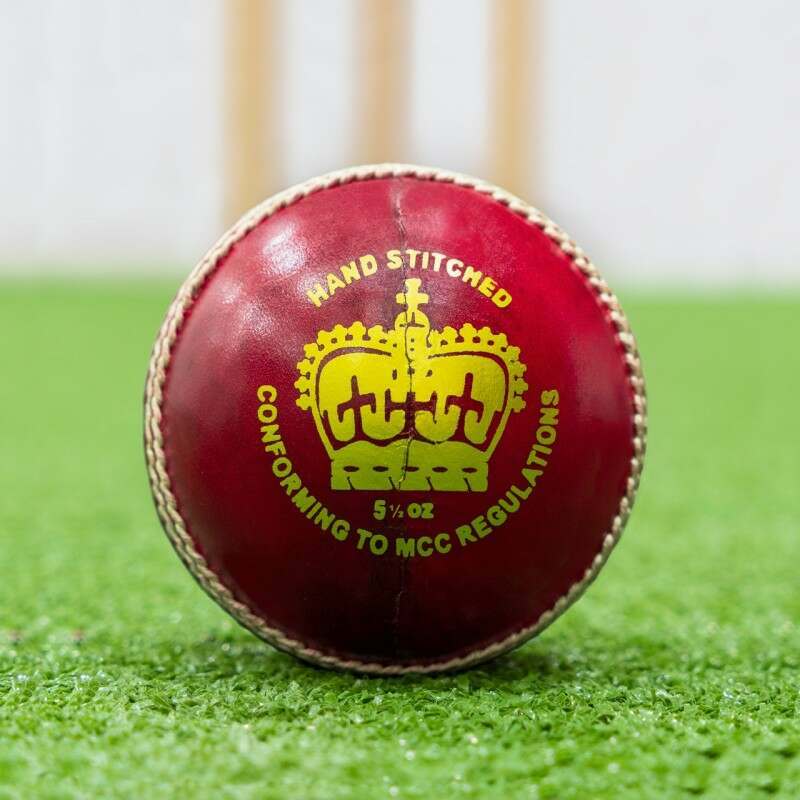

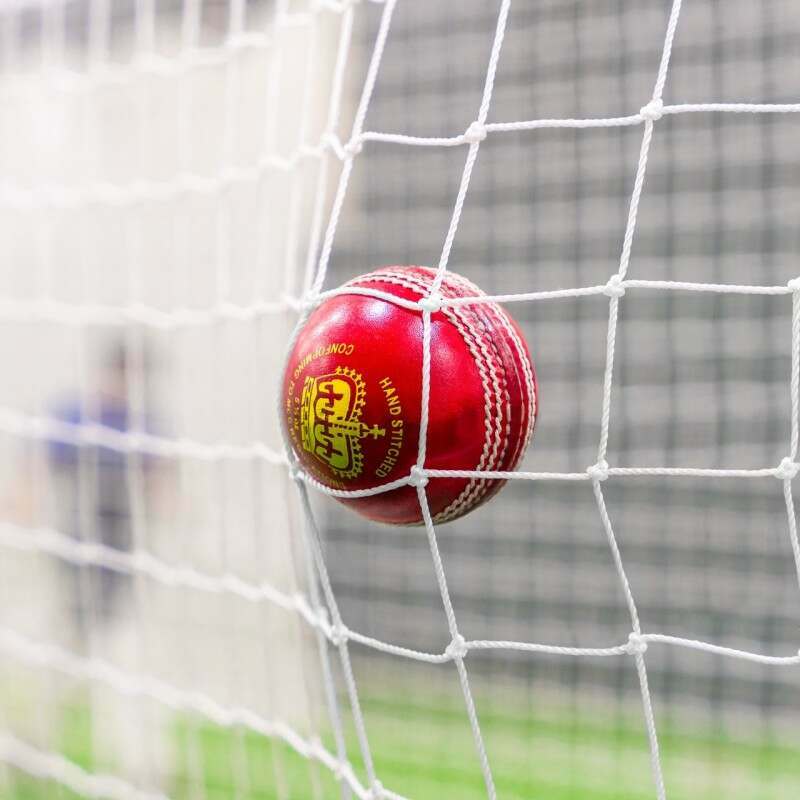

How is a cricket ball made?
Whilst the original cricket balls were handmade, the vast majority of balls are now made by machines; although the seams of higher quality cricket balls are often hand-stitched.
Leather is usually purchased in large sheets from a tannery, which dyes the leather the iconic red or modern white we’ve become familiar with. The leather sheets are cut into the separate halves of the cricket ball with a cutting machine or by hand using a template. The leather is placed into a semi-circular mould to create the spherical shape of the ball, with a machine trimming off any additional, unwanted leather that overlaps the mould’s cast. The cork core of the cricket ball is made in a separate process. A layer or thick piece of cork is pressed into shape using a high-pressure machine. Once the cork has been pressed into a sphere or block shape, glue is applied to the outside.
A high-speed machine wraps string, wool or nylon around the cork sphere. If the ball has an additional layer of wood around the core, this is created using a high-pressure mould and it trimmed in a similar fashion to the exterior leather.
When all the different elements of the cricket ball have been produced - the cork centre, the interior wood layer and the exterior leather - they are placed together in sequence, so the cork is in the centre, then the wood and finally the exterior leather. The final rows of stitching are then added to the exterior leather (cricket balls must have six rows of stitching on the exterior of the ball).
The exterior leather is then polished to achieve a high sheen finish, before the manufacturer’s stamp is applied to the finished ball.
CRICKET BALL WEIGHTS AND SIZES
How much does a cricket ball weigh?
According to official regulations for top-level cricket matches, a new ball must weigh between 5.50 and 5.75 ounces, which is equivalent to 155.9.0-163.01g.
How big is a cricket ball?
A cricket ball should have a diameter of 2.80-2.86 inches, which is equal to 7.11-7.26cm. To meet the regulations of “first-class” (top-level) cricket, a cricket ball must have a circumference that is between 8.81-9.00 inches or 22.4-22.9cm.
How do junior cricket balls compare to standard cricket balls?
Junior cricket balls are used by those playing in under 13 leagues and below. Junior cricket balls weigh 133g-144g (4.69-5.06oz), and have a circumference that is between 20.50-22cm (8.07-8.66 inches), meaning they are lighter and smaller than full size cricket balls. A junior cricket ball should have a diameter of 6.5-7.2cm.
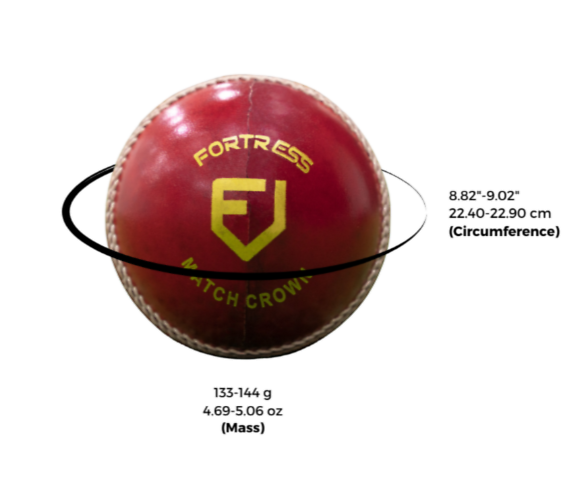

| CRICKET BALL SIZE GUIDE BY AGE | ||||
|---|---|---|---|---|
| Size | Age | Weight | Circumference | Diameter |
| Senior | 13 years and over | 5.50-5.75oz 155.00-163.01g |
8.82-9.02 inch 22.40-22.90cm |
2.81-2.87 inch 7.13-7.29cm |
| Junior | Under 13 years | 4.69-5.06oz 133g-144g |
8.07-8.66 inch 20.50-22.00cm |
2.57-2.76 inch 6.53-7.00cm |
TYPES OF CRICKET BALLS
What is the difference between white and red cricket balls?
Historically red balls were always used in cricket but in more recent times white cricket balls have been introduced to the game.
Whilst manufacturers of white cricket balls state that the only difference between white and red cricket balls is the colour, many players have stated that the white balls have a harder exterior and swing more easily than red balls.
Despite the performance differences flagged by many players the main factor in using different colour balls is visibility. These days white cricket balls tend to be used for shorter-duration T20 and ODI matches which are frequently played under floodlights. White balls were introduced as they are easier to see during evening and night games (red balls under floodlights can take on a brownish colour which isn’t always the easiest to see for players and spectators).
White balls aren’t suitable for use in test matches as the colour would clash with players’ kits and because of other potential issues related to the balls visibility. Instead, red balls continue to be used for test matches around the world, although pink balls have been introduced for day-night test matches that are scheduled to run into the evening with the use of floodlights. Before the pink cricket balls were introduced, lots of players had voiced complaints about the visibility of the red balls under artificial lighting. A pink coloured cricket ball was decided on, after testing several different coloured balls including orange and optic yellow under floodlights.
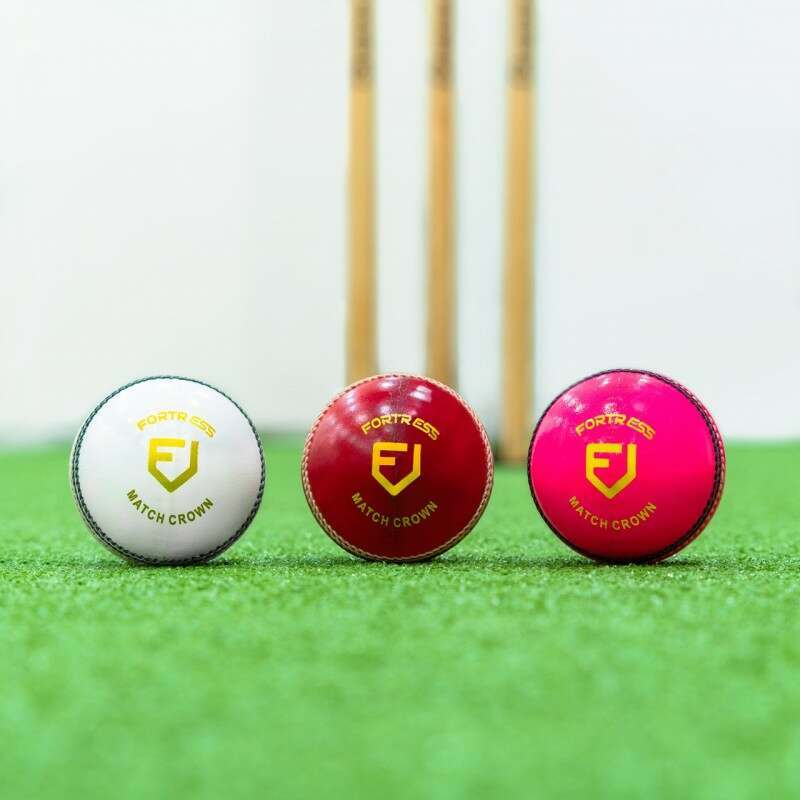

What are cricket practice and training balls?
Cricket training balls are designed to provide a similar performance to match cricket balls, but tend to be much more durable. This allows the training balls to be used repeatedly, over long periods without becoming damaged. One popular type of training cricket ball is the Incrediball from FORTRESS. With a foam core, the balls are much less likely to cause any type of injury or damage any nearby properties. With a traditional seam design, the Incrediballs spin and bounce the same way as a leather cricket ball. Ideal for schools and clubs, the Incrediball is incredibly durable
What is a wind ball cricket ball?
Wind ball is a version of cricket that is usually played on concrete. Played as an 8-overs-a-side contest, the balls used are much softer than normal cricket balls and are usually made from plastic to ensure they can withstand the wear and tear of being used on concrete.
Also suitable for use by schools and clubs, cricket wind balls are a great option for those looking to practice with a significantly reduced risk of injury or property damage.
CRICKET BALL RECORDS
What is the fastest ball in cricket history?
The fastest ball ever recorded was delivered at a speed of 161.3 km/hr (100.2 mph). The record-breaking delivery was bowled by Pakistan player Shoaib Akhtar (nicknamed the ‘Rawalpindi Express') in the 2003 Cricket World Cup against England in Cape Town, South Africa.
What is the fastest ball in women's cricket?
The fastest recorded delivery in women’s cricket is 128km/hr or 79.54mph. The record is shared by South Africa's Shabnim Ismail and New Zealand's Lea Tahuhu, who both recorded that speed. When comparing the speeds of top women fast-bowlers to those achieved by men, it’s worth keeping in mind that the women’s cricket ball is smaller and weighs 4.94 to 5.31 oz (140 to 151 g), compared to 5.50 to 5.75 oz (155.90 to 163.00 g) for men.
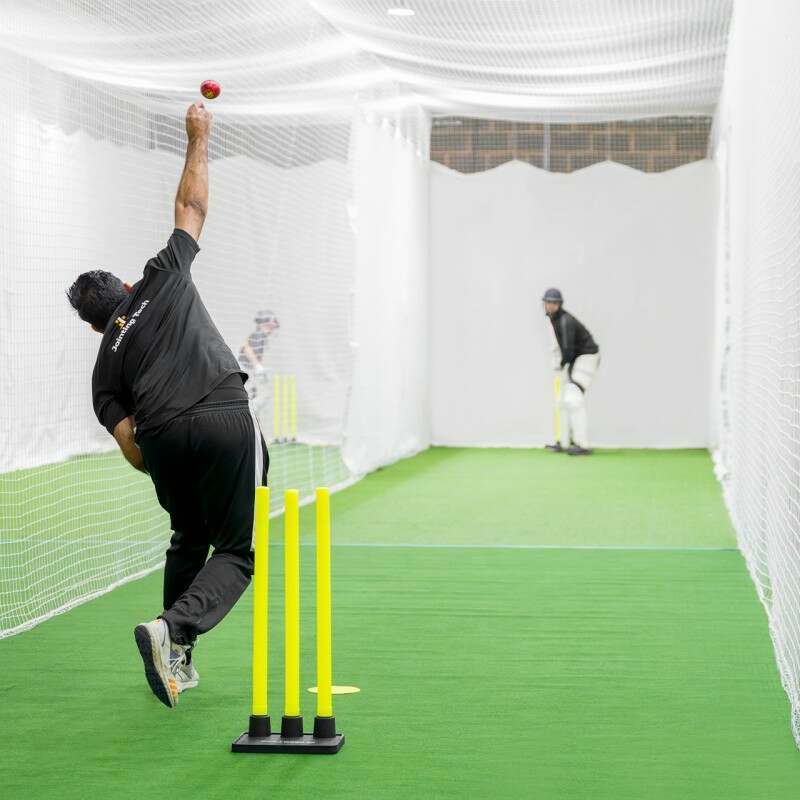

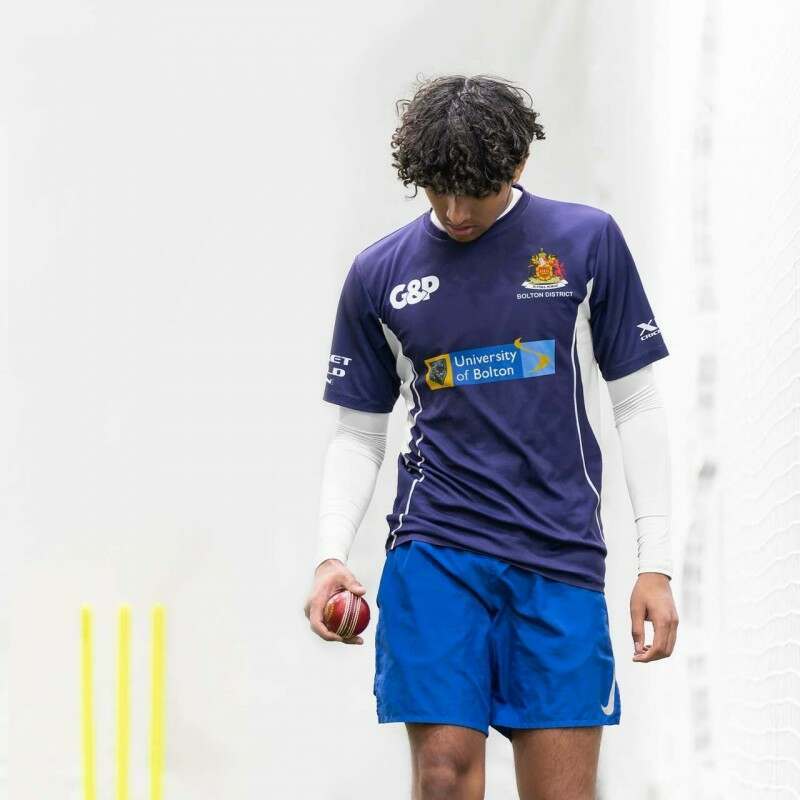

Who has faced the most balls in test, ODI & T20 cricket combined?
Indian cricketer Sachin Tendulkar has faced the most balls in international cricket history, with a total of 50,817.
Who has bowled the most balls bowled in test, ODI & T20 cricket combined?
Sri Linkan cricketer Muttiah Muralitharan, bowled a total of 63,132 balls during his international career. At the time of writing he also holds the record for the highest number of wickets in international cricket, with a total of 1,347.
Who has the most catches in test, ODI & T20 cricket combined?
South African Wicketkeeper Mark Boucher holds the record for the most catches in international cricket matches with 952 in total, including 532 in test matches alone.
Who has scored the most runs in test, ODI & T20 cricket combined?
Former Indian cricket player, Sachin Tendulkar collated a total of 34,357 during his international career which spanned from 1989 to 2013. The former captain of the Indian national side is regarded as one of the best cricket players of all time.
CHOOSING A CRICKET BALL
What are the different types of cricket balls available?
At Net World Sports we stock a comprehensive range of cricket balls. Whether you are looking for a professional-quality cricket ball for an international test match, a highly-durable premium practice cricket ball, or a cricket ball for the back garden, you're sure to find what you need within our selection of balls.
| FORTRESS CRICKET BALL COMPARISON | ||||
|---|---|---|---|---|
| Name | Suitable For | Material | Weight | Benefits |
| Royal Crown – Hand Stitched | County & test matches | Grade 1 4-piece cow-hide leather Portugese cork & rubber core |
Men's - 5.50 oz (156g) Women's - 5.00 oz (142g) Junior - 4.75oz (135g) |
· Test quality · Hand stitched 6-ply thread |
| Royal Crown – Machine Stitched | County & test matches | Grade 1 4-piece cow-hide leather Portugese cork & rubber core |
Men's - 5.50 oz (156g) Women's - 5.00 oz (142g) Junior - 4.75oz (135g) |
· Test quality · Machine stitched prominent seam |
| Match Crown | County matches | Grade 1 cow-hide leather Cork & rubber core |
Men's - 5.50 oz (156g) Women's - 5.00 oz (142g) Junior - 4.75oz (135g) |
· County quality · Highly durable |
| Indoor Pro | Indoor Leagues & Tournaments | Traditional yellow leather PU-injected core |
4oz (113g) | · Softer design for safety · Suitable for indoor matches |
| Club Crown | Club & school level training & matches | Cow-hide leather exterior Cork & rubber core |
Men's - 5.50 oz (156g) Women's - 5.00 oz (142g) Junior - 4.75oz (135g) |
· Great value · Club grade |
| Incrediball | Training sessions at all levels | Heavy duty plastic exterior High-quality foam core |
Senior - 3.32 oz (94g) Junior - 3.17oz (90g) |
· Match ball performance · Reduced injury risk |
| Wind Ball | Training sessions & informal games | Heavy duty plastic | Senior - 3.17oz (90g) Junior - 2.65oz (75g) |
· Reduced risk of damaging property · Reduced injury risk |
| Garden Cricket Ball | Training sessions & informal games | Heavy duty plastic | 3.17oz (90g) | · Reduced risk of damaging property · Reduced injury risk · Ideal for garden games |
| Coachaballs | Training sessions & informal games | Soft Heavy duty plastic | Senior - 4.94oz (140g) Junior - 4.41oz (125g) |
· Reduced risk of damaging property · Reduced injury risk · Ideal for indoor & outdoor games |
Where can I buy cricket balls?
You can choose from a wide range of cricket balls at Net World Sports. Our comprehensive range of cricket balls, are designed by cricketers, for cricketers. Undergoing a strict testing and design iteration process, they are made using the latest material-science and manufacturing technology. Our pièce de résistance - the FORTRESS Match Crown Cricket Ball is hand-stitched and features a 4-piece design for additional durability and performance.
You can choose from various professional quality match and training cricket balls, pioneering practice cricket balls that replicate the performance of a high quality leather cricket ball, whilst mitigating the risk of injury and even cricket balls specifically designed for informal games and training sessions in enclosed outdoor spaces such as back gardens.
Net World Sports is home to the very best cricket equipment and in addition to our red, white and pink cricket balls we also stock cricket nets, cages, mats, stumps, training equipment, sight screens, scoreboards and more so be sure to check out our full range of products.


![FORTRESS Royal Crown Cricket Balls [4x Colours] FORTRESS Royal Crown Cricket Balls [4x Colours]](https://nwscdn.com/media/catalog/product/cache/h265xw265/r/o/royal-crown-main-image_1.jpg)
![FORTRESS Machine Stitched Royal Crown Cricket Balls [4x Colours] FORTRESS Machine Stitched Royal Crown Cricket Balls [4x Colours]](https://nwscdn.com/media/catalog/product/cache/h265xw265/t/e/test-crown-cricket-balls-8-orange.jpg)
![FORTRESS Match Crown Cricket Balls [Red/White/Pink] FORTRESS Match Crown Cricket Balls [Red/White/Pink]](https://nwscdn.com/media/catalog/product/cache/h265xw265/c/r/cricket-match-ball-family-updated.jpg)
![FORTRESS Club Crown Cricket Balls [Red/White/Pink] FORTRESS Club Crown Cricket Balls [Red/White/Pink]](https://nwscdn.com/media/catalog/product/cache/h265xw265/c/r/cricket-club-ball-family_1.jpg)

![FORTRESS Cricket 'Incrediball' Practice Balls [Box of 6] FORTRESS Cricket 'Incrediball' Practice Balls [Box of 6]](https://nwscdn.com/media/catalog/product/cache/h265xw265/r/e/redfortressball-main.jpg)
![FORTRESS Cricket Wind Balls [Box of 6] FORTRESS Cricket Wind Balls [Box of 6]](https://nwscdn.com/media/catalog/product/cache/h265xw265/o/r/orangefortressball_3.jpg)
![FORTRESS Garden Cricket Balls [Box of 6] FORTRESS Garden Cricket Balls [Box of 6]](https://nwscdn.com/media/catalog/product/cache/h265xw265/y/e/yellowfortressfamilyballs.jpg)
![FORTRESS Cricket Coachaballs [Pack of 6] FORTRESS Cricket Coachaballs [Pack of 6]](https://nwscdn.com/media/catalog/product/cache/h265xw265/c/o/coachaball01-new_3.jpg)






![FORTRESS Cricket Bowling / Paceman Machine Balls [12 Pack] FORTRESS Cricket Bowling / Paceman Machine Balls [12 Pack]](https://nwscdn.com/media/catalog/product/cache/h265xw265/m/a/main_214_16.jpg)


